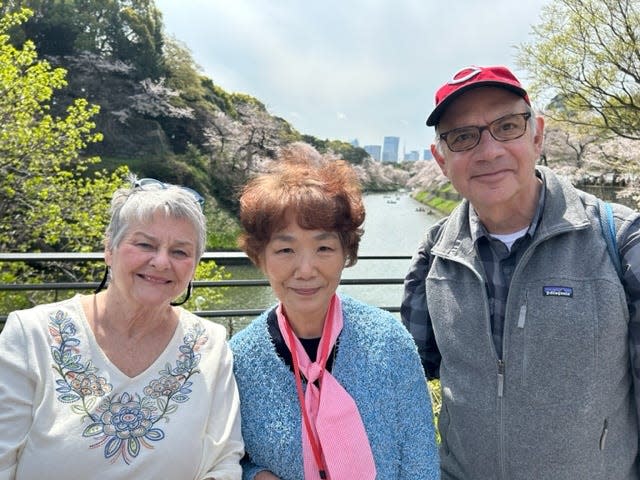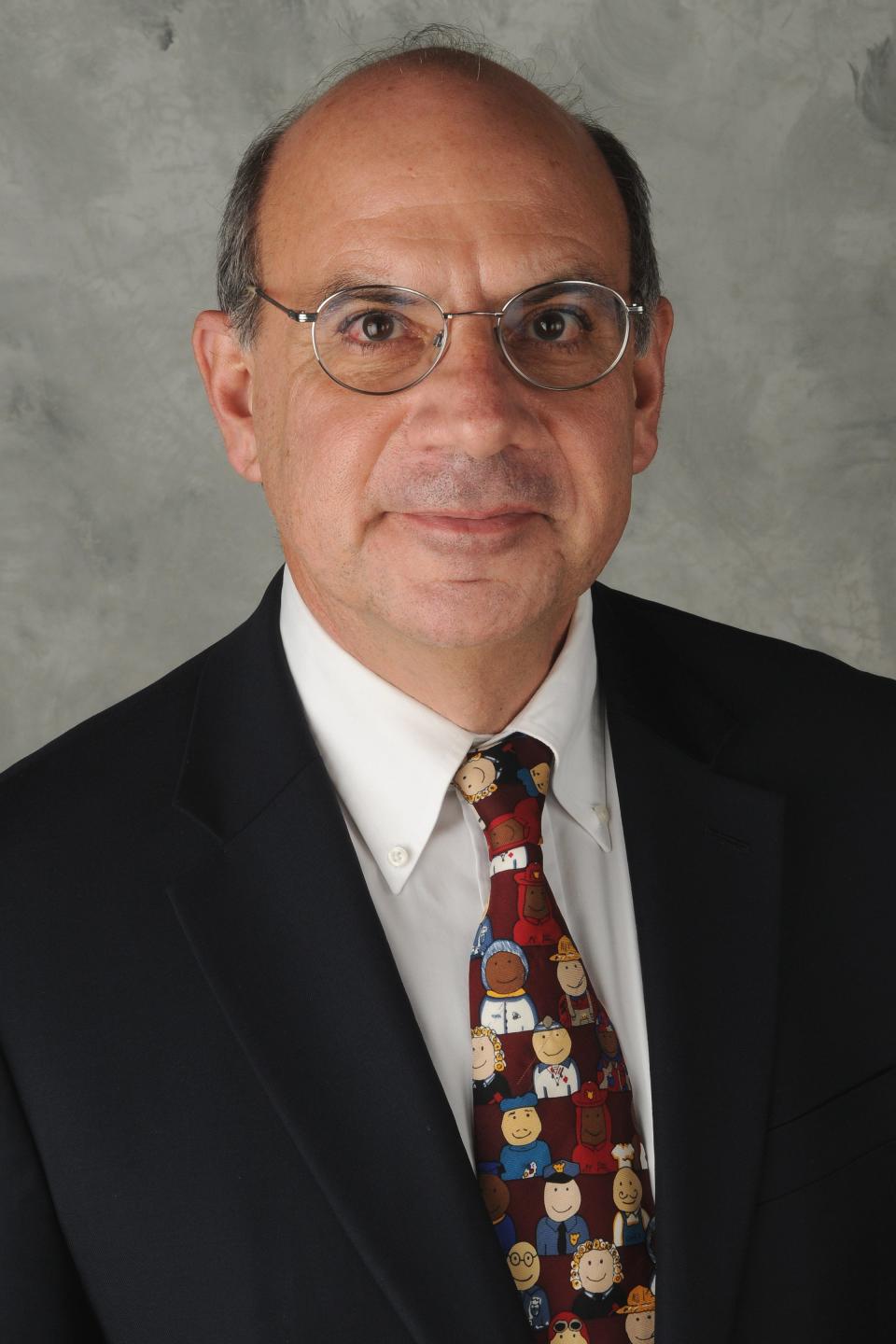Welcoming homes one way of achieving peace, understanding | Opinion

The cap is identical to a Reds cap. But the "C" represents the Carp. The Hiroshima Carp baseball team. Hiroshima, Japan that is.
The Hiroshima metro area is slightly smaller than Cincinnati. The buildings are much newer. No surprise since this is where we dropped the first atomic bomb in 1945.
We are traveling with the Cincinnati Chapter of Friendship Force, an international citizen exchange organization with 377 clubs in 60 countries. We just spent a week living in the homes of members of the Saitama Friendship Force Club in the Tokyo area. Our home hosts guided the 18 of us on the complex Tokyo subways, taught us the traditions of calligraphy and the Komono, opened their hearts in humorous and profound conversation about their families and daily lives. But also the Shoguns, the Emperor, Shintoism, Buddhism, WWII, their economic recovery, and the current challenges they face with China and North Korea.
Many of us were special guests at the English classes our hosts attend. New friends, 6,500 miles away.
The Peace Memorial Museum in Hiroshima tackles the impossible. An initial panoramic photo shows how Hiroshima, on Aug. 6, 1945, was leveled in seconds. Over 140,000 individuals killed in a flash and many more burned and diseased in the months and years following the blast, the black rain and the firestorm. Most of the dead were civilians and some were American POWs. Too many were children. The photos graphically reveal their burned bodies. The cases preserve their charred clothes. The display text includes the stories of purple spots, bleeding tongues and other terrifying symptoms of deadly radiation sickness.
We stayed with Aya the week before the Hiroshima visit. She and her now deceased husband traveled to Europe and Southeast Asia and had great fun during their marriage. Aya keeps a shrine in her room with a photo of her husband next to a fresh flower. She burns incense and prays every morning at this home shrine. I thought of Aya when in the peace museum I saw a bronze statue of the Buddha heated so high that the face was melted off.
The names of the bomb victims are collected in a box under a simple concrete arch on the grounds near the museum. Not far from that arch is a flame that will burn until the world is free of nuclear weapons. It has plenty of fuel.
Beyond that is the children’s memorial inspired by the famous 1,000 paper cranes folded by Sadako Susaki during her losing struggle to defeat leukemia caused by the bomb.
Aya shared her motto written since the death of her husband. Essentially, "I will be independent and stay optimistic through struggles of all kinds." She is an artist and enjoys her life. Aya knows exactly how to take the four trains, where to stand on the platforms and how to do the three transfers between Tokyo and Saitama. She is a master at pushing her small frame into a full express train to create room on board. The train is always quiet no matter how many riders.
On our last day, Aya’s son drove us to a friend’s house. The roadways were much more challenging for her than the trains. She and her son laughed till they were breathless, especially when their friend emerged on bicycle to lead us to the house.
The Motoyasu River runs through the Hiroshima blast site. Seventy-eight years ago, bodies floated in that water. Now cherry blossoms fall to the surface and float in random patterns. One of the home hosts told me of a Japanese proverb that essentially meant the water will carry us through both bad and good times.
I could see the Carp scoreboard from my hotel window in Hiroshima. Drew Anderson was playing, a former player for the Louisville Bats, the Triple-A Reds affiliate. Another link between Cincinnati and Japan. The Carps lost in the ninth inning. And the Motoyasu continues to flow.
Hot springs are common in Japan. Even the hotels often create separate soaking pools for men and women. No one speaks in the pool. It is a time for reflection. I am no expert on how we achieve peace and understanding in our world, but I do know that one step on that path leads across the thresholds and into the welcoming homes of folks like Aya and her friends at the Friendship Force Club of Saitama, Japan. It does give me hope.
Al Gerhardstein is a semi-retired attorney in Cincinnati.

This article originally appeared on Cincinnati Enquirer: Welcoming homes one way of achieving peace, understanding | Opinion

